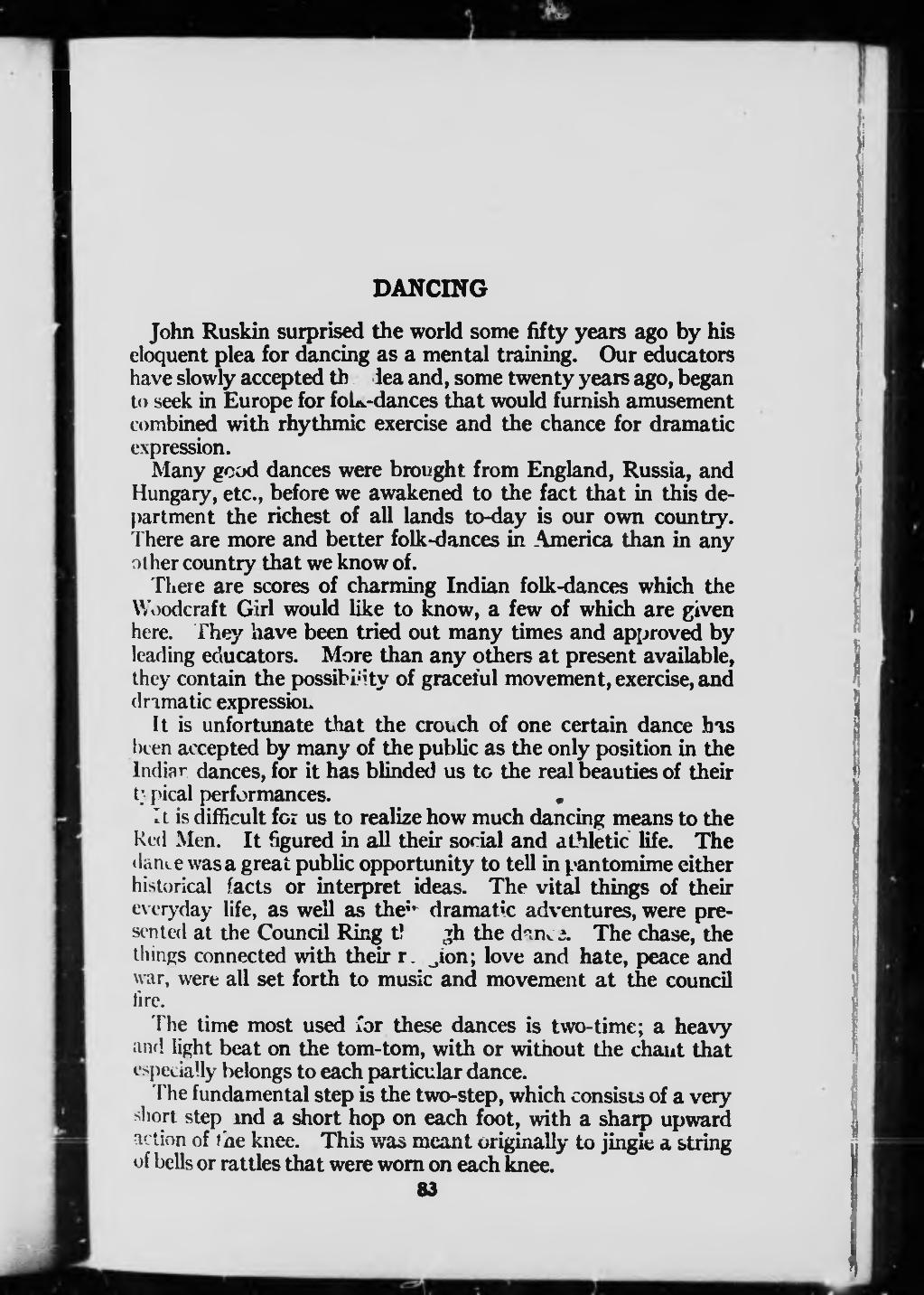DANCmO John Ruskin surprised the world some fifty years ago by his eloquent plea for dancing as a mental training. Our Mutators have slowly accepted tb iea and, some twenty years ago, began to seek in Europe for foU-dances that would furnish amusement combined with rhythmic exercise and the chance for dramatic expression. Many good dances were brought from England, Russia, and Hungary, etc., before we awakened to the fact that in this de- |)artment the richest of all lands to-day is our own country, I here are more and better folk-dances in America than in any other country that we know of. There are scores of charming Indian folk-dances vrhich the Woodcraft Girl would like to loiow, a few of which are given here, f hey have been tried out many times and approved by leading educators. More than any oUiers at present available, they contain the possibL'ity of graceful movement, exercise, and dramatic expressiou It is unfortimate that the crouch of one certain dance h^s Ixen accepted by many of the pubUc as the only position in the Indiar dances, for it has blinded us to the real beauties of their t; pica! performances. , It is difficult for us to realize how much dancing means to the Red Men. It figured in all their social and athletic life. The (laiKC was a great pubUc opportunity to tell in pantomime either historical facts or interpret ideas. The vital things of their e eryday life, as well as the'*^ dramatic adventures, were pre- sented at the Council Ring L' jh the dnn^ e. The chase, the thiiifTs connected with their r. ^ion; love and hate, peace and war, were all set forth to music and movement at the council li re. The time most used for these dances is two-time; a heavy and light beat on the tom-tom, with or without the chant that especially belongs to each particular dance. The fundamental step is the two-step, which consists of a very short step ind a short hop on each foot, with a shaip upward V linn of uc knee. This was meant originally to jingie a string of bells or rattles that were worn oa eadi knee. U
Stránka:roll 1916.djvu/107
Z thewoodcraft.org
Tato stránka nebyla zkontrolována
